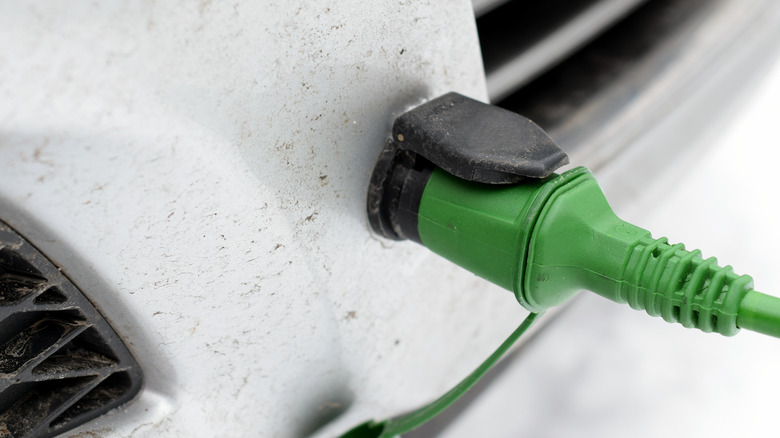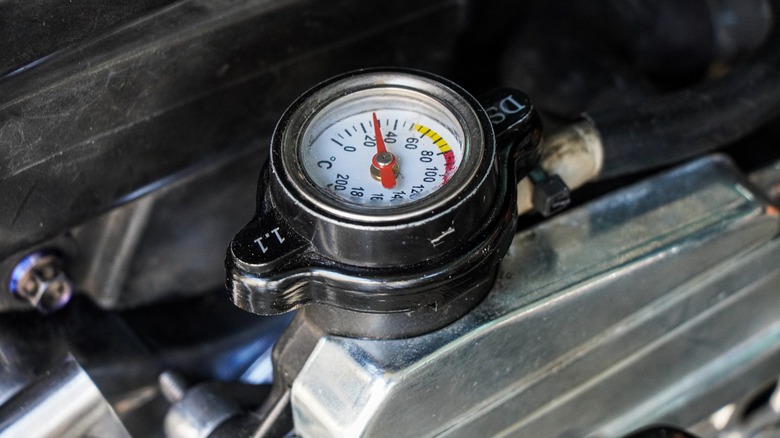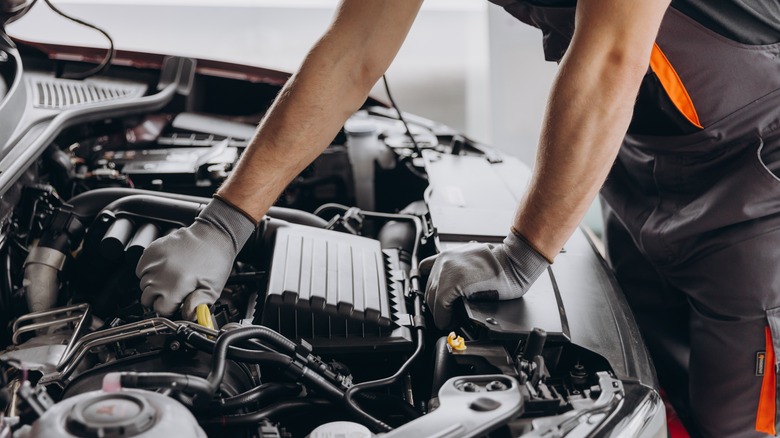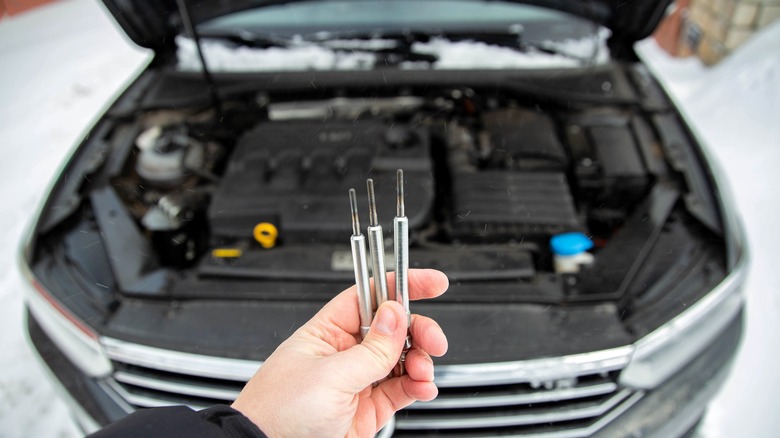At What Temperature Should You Plug In Your Diesel Truck Block Heater?
We may receive a commission on purchases made from links.
Winter mornings can be especially tough for diesel truck owners, as freezing temperatures push engines to their limits. As a truck enthusiast, I've spent a lot of hours grappling with issues that affect diesel engines in cold weather, like fuel-filter icing, frozen coolant, and fuel gelling. While modern diesel engines are known for their durability, they face particular difficulties in extreme cold temperatures. Unlike gasoline engines, which use spark ignition, diesel engines rely on compression ignition. While this makes them more fuel-efficient and robust, it also makes diesel engines vulnerable to freezing weather.
This is where engine block heaters come into play, offering a simple yet effective way to start your diesel engine in the cold. These electrical heating devices ensure reliable starts and reduce stress on the engine in sub-zero temperatures by pre-warming the engine. But it's important to know when to plug them in and how long to heat your engine. At what temperature should you plug in your diesel truck's block heater to get the most out of it?
What is an engine block heater?
An engine block heater is a device that preheats the engine block and its internal fluids before starting the vehicle in cold temperatures. It's one of the most useful tools you can have if you depend on diesel-powered vehicles in colder parts of the world.
As temperatures drop below 20 degrees, engine oil thickens and loses its ability to properly lubricate critical components like crankshaft bearings, camshafts, and pistons. Diesel fuel can also gel, a phenomenon called cloud point, where wax crystals start forming, giving the fuel a cloud-like appearance. Also, the coolant becomes frozen and the engine loses its ability to reach optimal operating temperatures of 190 to 225 degrees.
A block heater works by warming the engine oil and coolant, which allows these fluids to maintain optimal viscosity. Preheating them ensures smoother starts and minimizes the wear and tear on engine components.
How does an engine block heater work?
Most engine block heaters consist of a heating element such as the Zerostart Engine Block Heater, or take the form of a heating pad like the Silicone Car Engine Heater Pad. But regardless of the design and shape, the goal is the same: to transfer heat directly to the engine's critical components, which include the oil, coolant, and engine block to reduce wear and ensure smooth cold starts.
These devices typically connect to a standard 120-volt electrical outlet. Once powered, the block heater gradually raises the temperature of the fluids or the engine. Preheating engine oil is especially critical as frozen oil becomes less effective in cold temperatures. Some heaters, like the Kat's Magnetic Heater, replace a core plug and directly heat the engine through the coolant. Certain models even warm the battery holder.
Similarly, the preheated coolant contributes to faster engine warmup times, which lets the engine quickly reach its operating temperature. Today, a lot of diesel engines rely on glow plugs or intake heaters to assist with cold starts. However, these components don't address the oil and coolant temperatures, so you'll likely still need a diesel truck block heater through a harsh winter.
When to use a block heater for your diesel truck
The timing of when to plug in your block heater depends on the outside temperatures and your vehicle's starting conditions. As a general rule of thumb, it is advisable to use an engine block heater when temperatures drop below 20 degrees. At this point, cold starts become increasingly difficult for diesel engines due to the thickening of the engine oil.
In cold climates, such as those in Canada or northern parts of the United States, an engine block heater may become necessary even at temperatures slightly above this threshold for consistent startups. For newer diesel trucks that have synthetic oils, you may find the need arises at temperatures closer to zero degrees, since synthetic oils have improved flow properties compared to conventional oils.
How long you plug in the engine block heater is equally important. Plugging it in two to four hours before starting the engine is sufficient to warm the engine oil and coolant. Keeping the heater plugged in longer than this doesn't yield any additional benefits and may lead to premature wear of the heating element. Consider using a timer so that the heater is only active during the critical pre-startup hours. You should also avoid revving your engine for a quick warmup, as this causes a temperature spike that stresses the engine components.



